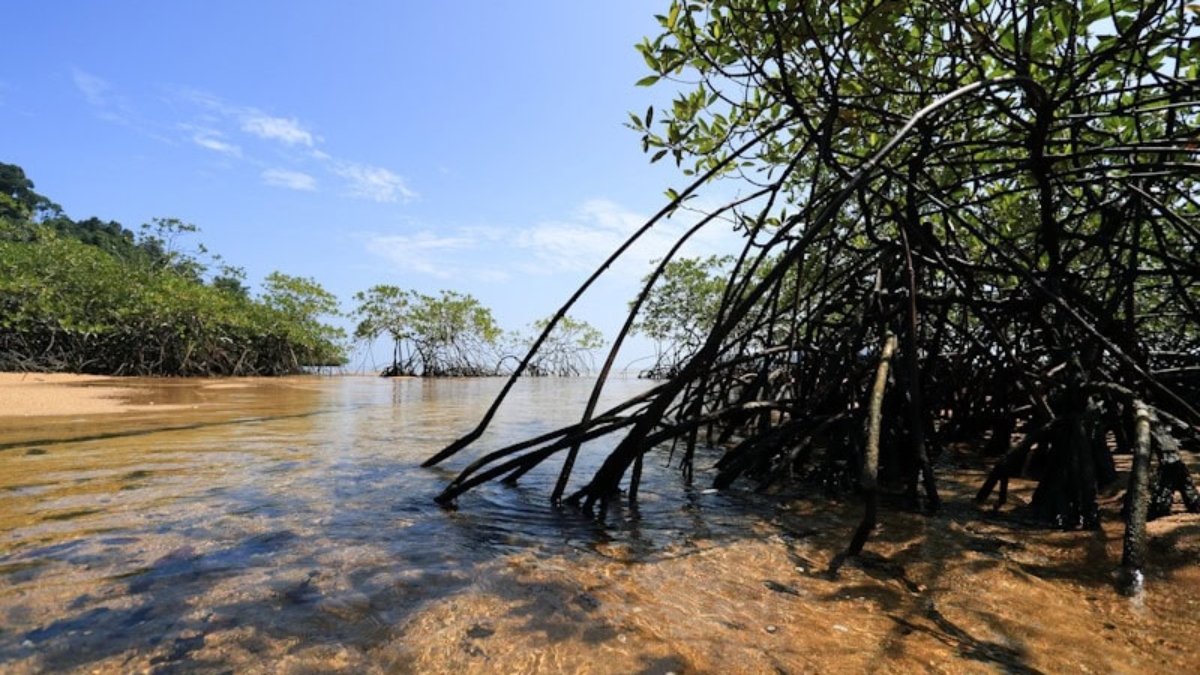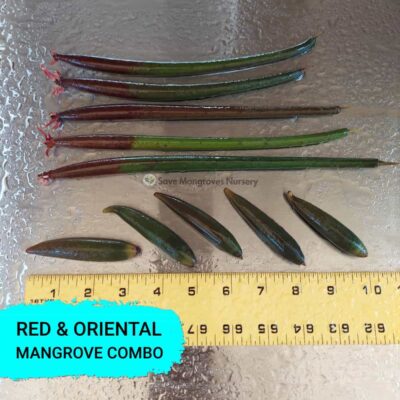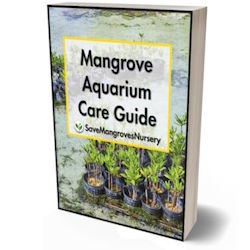Mangroves are fascinating plants that have adapted to thrive in challenging environments, often found in the transitional zones between land and sea. But when it comes to aquarium care, a common question arises: do mangroves need brackish water? In this article, we’ll explore the water preferences of mangroves, their adaptability, and what you need to know to keep them healthy in your aquarium.
What is Brackish Water?
Brackish water is a mix of freshwater and saltwater, typically found where rivers meet the sea. The salinity of brackish water is higher than freshwater but lower than seawater, creating a unique environment where only certain plants and animals can thrive.
Fun Fact: 🌟
Mangroves are among the few plant species that can survive in a wide range of salinities, from freshwater to full-strength seawater. This adaptability makes them incredibly resilient.
Do Mangroves Prefer Brackish Water?
While mangroves are often associated with brackish water environments, they don’t necessarily require it to thrive. In the wild, Red Mangroves (Rhizophora mangle) are commonly found in brackish waters, but they can also grow in both freshwater and saltwater.
Good: ✅
- Mangroves are highly adaptable and can grow in various water conditions, including freshwater, brackish, and saltwater.
- They are tolerant of changes in salinity, making them suitable for different types of aquariums.
Bad: ❌
- Sudden or extreme changes in salinity can stress mangroves, leading to yellowing leaves or stunted growth.
- In freshwater environments, mangroves may require additional care to ensure they receive the necessary nutrients that are naturally present in brackish or saltwater.
Growing Mangroves in Freshwater
If you’re considering growing mangroves in a freshwater aquarium, you’ll be pleased to know that it’s entirely possible. However, there are some considerations to keep in mind to ensure your mangroves thrive.
Pros: ✅
- Freshwater aquariums provide a stable environment with consistent salinity levels, reducing the risk of salinity-related stress.
- Freshwater is readily available and easy to maintain, making it convenient for aquarium enthusiasts.
Cons: ❌
- Mangroves in freshwater may require additional supplementation of nutrients like magnesium and calcium, which are more abundant in brackish or saltwater.
- Without the natural presence of salt, mangroves may grow slower in freshwater compared to brackish or saltwater.
Fun Fact: 🌟
Mangroves have specialized root systems known as pneumatophores that allow them to breathe in waterlogged soils. These roots often rise above the water surface, giving mangroves their distinctive look.
Growing Mangroves in Brackish Water
Brackish water is often considered the ideal environment for mangroves, as it closely mimics their natural habitat. If you’re aiming for optimal growth and health, brackish water might be the way to go.
Pros: ✅
- Brackish water provides a balanced mix of nutrients and salinity, promoting healthy growth and root development.
- Mangroves in brackish water are less likely to experience nutrient deficiencies, as they have access to a more diverse range of minerals.
Cons: ❌
- Maintaining a stable brackish water environment can be challenging, requiring careful monitoring of salinity levels.
- Brackish water setups may be more complex to maintain, especially for beginners, due to the need for specialized equipment and regular water testing.
How to Transition Mangroves Between Water Types
If you’re planning to move your mangroves from one water type to another (e.g., freshwater to brackish), it’s essential to do so gradually. Rapid changes in salinity can shock the plant and lead to stress or even death.
Good: ✅
- Gradual acclimatization allows the mangrove to adjust to the new salinity level without experiencing undue stress.
- Use a drip acclimation method to slowly introduce the mangrove to the new water type over several hours or days.
Bad: ❌
- Sudden changes in salinity can cause leaf drop, yellowing, and stunted growth.
- Failing to monitor the mangrove’s response during the transition can lead to long-term damage.
Mangrove Fact: 🌟
Red Mangroves are known for their ability to filter out salt from seawater through their roots. This process allows them to thrive in saline environments where other plants might struggle.
Best Practices for Growing Mangroves in Aquariums
Regardless of the water type you choose, certain best practices will help ensure the success of your mangroves in an aquarium setting.
- Lighting: Mangroves require bright, indirect light to thrive. Consider using full-spectrum LED lights that mimic natural sunlight.
- Water Quality: Regular water changes and monitoring of pH, salinity, and nutrient levels are crucial for the health of your mangroves.
- Root Support: Mangroves need a stable base to anchor their roots. Use a substrate like sand or gravel, or secure the roots with aquarium-safe weights.
- Pruning: Regularly trim the leaves and branches to encourage bushier growth and prevent the plant from outgrowing its space.
- Patience: Mangroves are slow growers, so patience is key. Over time, they will develop into a beautiful and functional addition to your aquarium.
Fun Fact: 🌟
Mangroves play a vital role in coastal ecosystems by stabilizing shorelines, providing habitat for marine life, and filtering pollutants from the water.
Conclusion: Do Mangroves Need Brackish Water?
In summary, while mangroves naturally thrive in brackish water, they are incredibly adaptable and can grow in freshwater or saltwater environments. The key to success lies in understanding their needs and providing the right conditions for their growth.
At Save Mangroves Nursery, we offer healthy Live Red Mangrove Plants that are ready to add to and naturally filter your Saltwater, Freshwater, or Brackish Aquarium tanks. We ship out to all 50 states daily, making it easy for you to start your mangrove-growing journey.
Whether you’re a seasoned aquarium enthusiast or just getting started, mangroves can be a rewarding addition to your tank. With the right care, they will not only thrive but also contribute to a healthier and more balanced aquarium environment.
Best seller products
-
18”-24” Red Mangroves With Roots & 2-4 Leaves
Price range: $34.99 through $87.99 -
10”-14” Red Mangroves With Roots & 2-4 Leaves
Price range: $19.99 through $47.99 -
28″ Red Mangrove Tree – Fully Mature Plant
Price range: $0.00 through $230.00 -
[RARE] Orange Oriental Mangroves Propagule Seeds
Price range: $19.99 through $79.99 -
30″ Red Mangrove Tree – Fully Mature Plant
Price range: $0.00 through $180.00 -
Red & Oriental Mangrove Combo Bundle
Price range: $29.99 through $44.99
 Cart is empty
Cart is empty 




![[RARE] Orange Oriental Mangroves Propagule Seeds](https://savemangroves.com/wp-content/uploads/2025/07/Oriental-Mangrove-Seeds-Save-Mangroves-Nursery-400x400.jpg)



Add a Comment
You must be logged in to post a comment